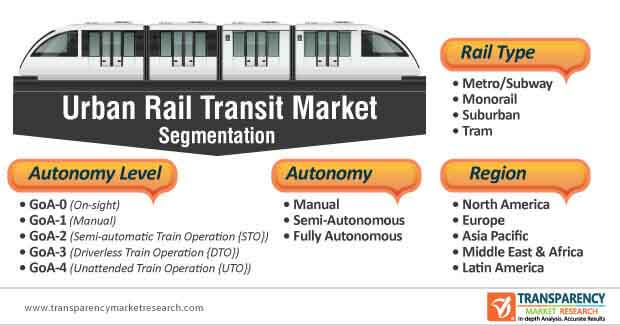
The Covid-19 crisis has greatly impacted the public transport ridership and service provision worldwide. This has led to a ripple effect in the urban rail transit market. As such, massive coronavirus lockdown relaxations in urban transportation are anticipated to fuel market growth and offset the losses in 2021 and 2022. New public transport planning strategies are setting production wheels in motion for automotive companies.
Major decline in service capacity of urban rail transit is predicted to affect business activities for automotive companies. Loan extensions, delay in debt payments, and strategic budget allocation for business activities are becoming increasingly commonplace in the urban rail transit market. The reopening of commercial, educational, and industrial sectors is kick-starting revenue flow in the urban rail transit market.

Request a sample to get extensive insights into the Urban Rail Transit Market
Light Rails to Serve as Integrated Public Transport Systems in Sydney
The light rail service is gaining visibility in Sydney. Advantages such as high passenger capacity per lane, per hour, and lowering of operating cost per passenger are catching the attention of city planners. However, high capital investment, inflexibility of route, and disruption in traffic during construction activities are shortcomings of light rail for Sydney. Hence, companies in the urban rail transit market are seeing light rails as an integrated public transportation system in Sydney instead of a separate money making venture.
Land use and transportation are being planned together to make light rails a success in Sydney. Such trends are bolstering growth of the Australia urban rail transit market.
To understand how our report can bring difference to your business strategy, Ask for a brochure
ICT-enabled Applications Meet at Crossroads with Intelligent Urban Rail Transit Systems
Major technological feats such as driverless metros in Delhi, India, are bringing a significant change in revenue growth of the India urban rail transit market. In a densely populated country such as India, investors are tapping into incremental opportunities in automotive and public transport sectors of the country.
Intelligent urban rail transit systems are fueling the growth of the market. The growing demand for low energy consumption and high efficiency have set the manufacturing standards for automotive companies. ICT (Information and Communication Technologies)-enabled applications in modern rail transits are making transportation safer and convenient for passengers. However, it is challenging to maintain reliable train to ground wireless communication networks. Hence, stakeholders in the urban rail transit market are increasing their R&D expenditure to establish robust infrastructure in urban rail transit systems.
Read Our Latest Press Release:





